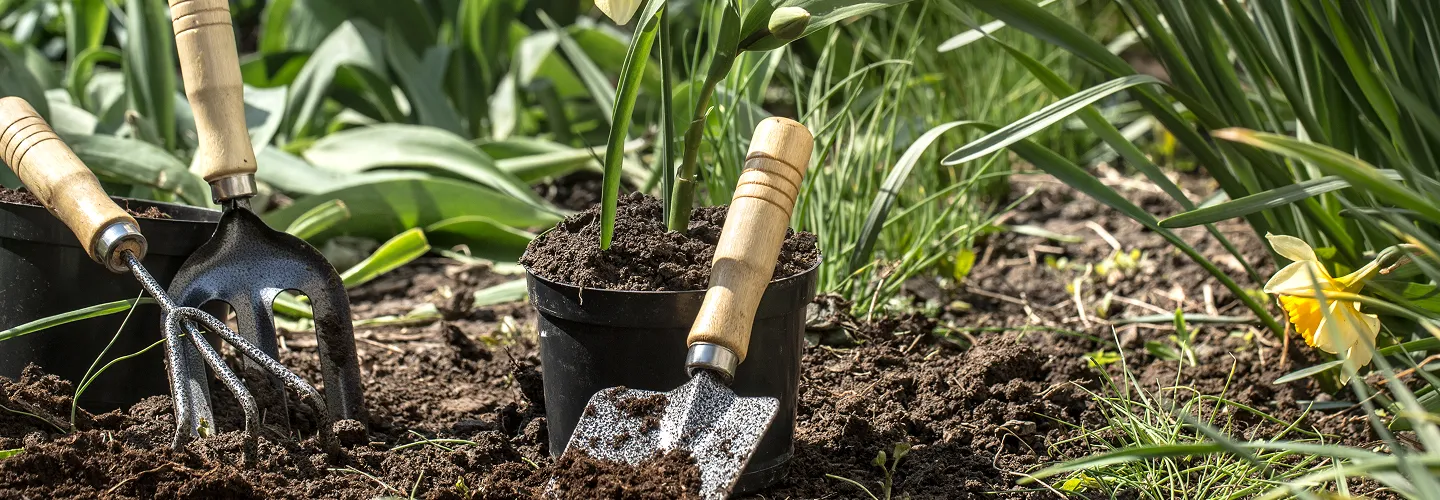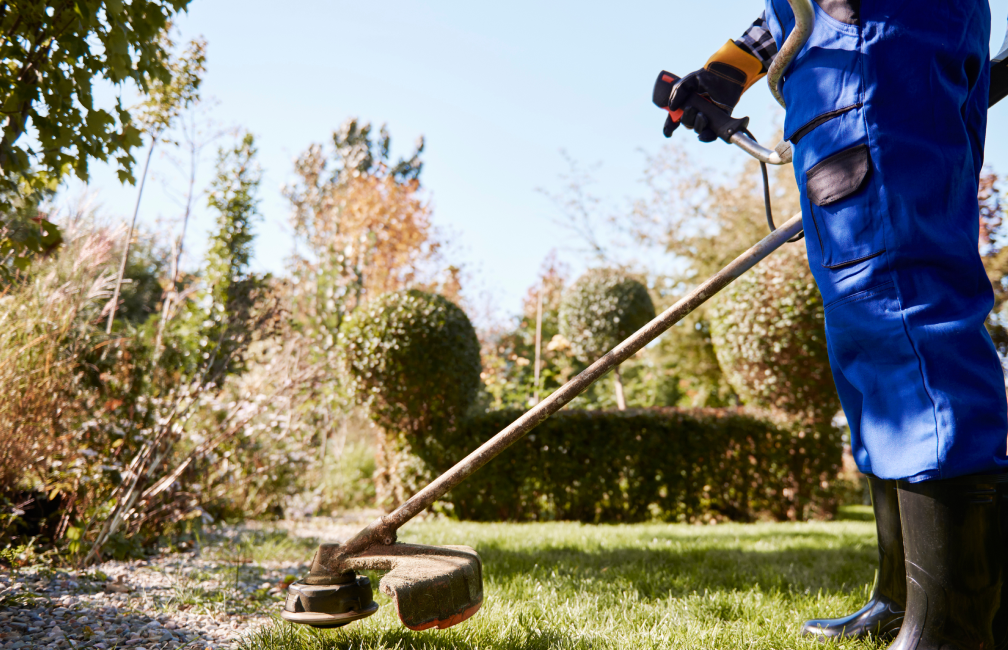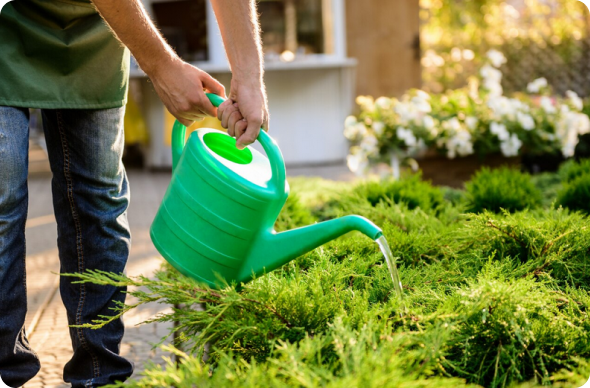
Hanson Lawn Aeration Services
Choose our expert lawn aeration services to revitalize your yard—improving soil health, boosting grass growth, and ensuring a lush, resilient lawn that stands out all season long.
Get a Free QuoteWhen to Schedule Lawn Aeration in Hanson, MA – Seasonal Guide
In Hanson, MA, timing your lawn aeration is crucial for achieving a lush, healthy yard. The best periods for aeration are typically early fall and late spring, when the soil is moist but not saturated and grass is actively growing. Hanson’s climate, with its cold winters and humid summers, means that aeration is most effective after the last frost in spring or as temperatures begin to cool in September. Local neighborhoods like Indian Head and the area near Burrage Pond Wildlife Management Area often experience varying soil compaction and shade coverage, which can influence the ideal aeration window.
Environmental factors unique to Hanson—such as the risk of late spring frosts, summer droughts, and the prevalence of clay-heavy soils—should be considered when planning your lawn care. Properties near Shumatuscacant River or those with dense tree canopies may require more frequent aeration due to increased shade and moisture retention. For more information on local weather patterns and municipal guidelines, visit the Town of Hanson official website.
Local Factors to Consider for Lawn Aeration in Hanson
- Tree density and shade coverage, especially in neighborhoods like Monponsett
- Soil type (clay or sandy soils may require different aeration schedules)
- Terrain and drainage, particularly in low-lying areas
- Precipitation patterns and risk of summer drought
- Municipal restrictions or recommendations on lawn care practices
Benefits of Lawn Aeration in Hanson

Improved Soil Health
Enhanced Grass Growth
Better Water Absorption
Reduced Soil Compaction
Increased Nutrient Uptake
Stronger, Greener Lawns

Hanson Lawn Aeration Types
Core Aeration
Spike Aeration
Liquid Aeration
Slicing Aeration
Manual Aeration
Plug Aeration
Rolling Aeration
Our Lawn Aeration Process
Site Evaluation
Preparation
Core Aeration
Cleanup
Post-Aeration Review
Why Choose Hanson Landscape Services

Hanson Homeowners Trust Us
Expert Lawn Maintenance
Reliable Scheduling
Competitive Pricing
Professional Team
Satisfaction Guarantee
Personalized Service
Contact Hanson's Department of Public Works for Soil Core Disposal & Aeration Debris Management
Strategic management of extracted soil plugs following turf perforation procedures represents an essential component of responsible landscape stewardship throughout Hanson, Massachusetts. The town's Department of Public Works has developed comprehensive protocols for organic yard debris processing that significantly impact property owners managing post-aeration materials. Understanding these municipal standards ensures regulatory compliance while fostering environmentally sustainable soil cultivation practices across this Plymouth County community, distinguished by its extensive cranberry cultivation heritage and pristine pine barrens ecosystems.
Hanson Department of Public Works
542 Liberty Street, Hanson, MA 02341
Phone: (781) 293-2131
Official Website: Department of Public Works
Municipal authorities advocate allowing extracted plugs to naturally decompose on turf surfaces, restoring valuable organic compounds and essential mineral nutrients to the soil ecosystem. When removal becomes necessary due to excessive accumulation, residents must employ biodegradable paper receptacles exclusively, avoiding synthetic materials that violate Massachusetts General Law Chapter 111, Section 150A. Effective cultivation strategies encompass allowing plugs to air-dry 48-72 hours before redistribution through mowing operations, positioning collected materials away from cranberry bog irrigation networks and pine barrens drainage systems, thoroughly cleaning hard surfaces to prevent edaphic migration into stormwater infrastructure, and synchronizing with municipal transfer station operating schedules for proper composting. This methodology proves exceptionally beneficial for Hanson's predominantly acidic, nutrient-poor soils that require organic enrichment to counteract challenging growing conditions characteristic of cranberry cultivation areas and pine barrens environments.
Understanding Soil Compaction in Hanson's Glacial Outwash Plains and Cranberry Bog Complexes
Hanson's distinctive geological composition encompasses extensive glacial outwash plains interspersed with cranberry bog cultivation areas and pine barrens ecosystems, creating specialized soil cultivation challenges throughout this southeastern Massachusetts community. According to USDA Web Soil Survey documentation, predominant soil classifications include Carver coarse sand and Plymouth loamy sand on well-drained outwash plains, Windsor and Hinckley sandy soils on marine terraces, plus specialized bog soils including Freetown mucky peat and Scarboro sandy loam in cranberry cultivation zones. Poorly drained areas feature Whitman fine sandy loam and Ridgebury fine sandy loam in kettle pond depressions, while upland remnants contain scattered Paxton and Woodbridge fine sandy loams on glacial till deposits.
The extensive glacial outwash formations drain rapidly yet develop surface crusting and compaction layers that restrict water infiltration and oxygen exchange, conditions intensified by cranberry bog equipment traffic and recreational activities throughout the pine barrens. These sandy formations become extremely difficult to rewet during summer drought periods, creating challenging growing conditions for conventional turf establishment. Acidic soil conditions from pine needle decomposition and cranberry cultivation practices create additional complications through pH imbalances that affect nutrient availability and microbial activity essential for healthy soil structure.
University of Massachusetts Extension Center for Agriculture, Food and the Environment
161 Holdsworth Way, Amherst, MA 01003
Phone: (413) 545-2766
Official Website: University of Massachusetts Extension
These environmental stressors manifest as localized standing water in depressions despite overall rapid drainage characteristics, extreme soil resistance indicating hardened surface crusts, severe turf deterioration during summer drought periods, and extensive moss proliferation in acidic areas where pH levels inhibit conventional grass establishment. Professional aeration becomes indispensable when conventional maintenance proves inadequate, with sandy outwash areas typically requiring biennial applications using specialized equipment designed for acidic, nutrient-poor substrates, while bog-adjacent properties benefit from annual treatments paired with pH management and organic matter supplementation programs.
Hanson Conservation Commission Guidelines for Core Aeration Near Protected Cranberry Bog and Pine Barrens Ecosystems
Environmental protection requirements substantially influence lawn aeration operations throughout Hanson, particularly adjacent to the Indian Head River, Shumatuscacant River, Oldham Pond, Maquan Pond, Wampatuck Pond, extensive cranberry bog complexes, and protected pine barrens habitats that characterize this community's exceptional ecological heritage. The Hanson Conservation Commission enforces stringent buffer zone restrictions prohibiting mechanical soil disturbance within 100 feet of certified wetland boundaries and 200 feet of perennial stream channels, as mandated by the Massachusetts Wetlands Protection Act.
Hanson Conservation Commission
542 Liberty Street, Hanson, MA 02341
Phone: (781) 293-2131
Official Website: Conservation Commission
Property owners formulating aeration proposals must secure written authorization when operating within designated buffer zones or environmentally sensitive regions. The commission demands comprehensive site documentation including wetland delineations, cranberry bog boundaries, proposed aeration locations, and thorough erosion prevention measures preventing soil displacement into protected aquatic systems and agricultural water supplies. Timing limitations apply during cranberry harvest seasons and wildlife reproduction periods, typically restricting mechanical operations between March 15 and August 31 to safeguard sensitive bog ecosystems and nesting bird populations. Special coordination becomes necessary with cranberry growers who maintain water rights and flooding schedules that affect regional water table elevations and soil saturation patterns throughout the community.
Hanson's Implementation of Massachusetts Soil Health Regulations for Aeration Operations
Massachusetts soil health regulations establish comprehensive standards for mechanical soil management practices, including core aeration operations conducted throughout Hanson's cranberry bog and pine barrens environment. These regulations require adherence to best management practices designed to protect groundwater quality and prevent soil erosion during aeration activities, while supporting municipal environmental protection objectives in this agriculturally significant region where soil management directly impacts both residential landscapes and active cranberry production systems.
Massachusetts Department of Environmental Protection
One Winter Street, Boston, MA 02108
Phone: (617) 292-5500
Official Website: Massachusetts Department of Environmental Protection
Massachusetts Department of Agricultural Resources
251 Causeway Street, Suite 500, Boston, MA 02114
Phone: (617) 626-1700
Official Website: Massachusetts Department of Agricultural Resources
Implementation emphasizes timing restrictions, equipment specifications, and post-aeration stabilization requirements ensuring environmental protection while supporting effective cranberry bog region soil management. Operations must avoid frozen or waterlogged conditions, utilizing hollow-tine equipment that extracts clean cores 2-3 inches deep on sandy soils with specialized techniques for acidic substrates. Primary benefits include enhanced water infiltration through surface crust layers, improved organic matter incorporation in nutrient-poor sandy soils, reduced surface compaction from agricultural equipment legacy impacts, and support for acid-tolerant turf establishment in challenging pine barrens and bog-adjacent growing conditions.
Post-Aeration Stormwater Management in Compliance with Hanson's MS4 Program
Hanson's Municipal Separate Storm Sewer System (MS4) program establishes precise requirements for managing stormwater runoff following lawn aeration activities, particularly in developed areas where soil disturbance could contribute to water quality degradation in local pond systems and cranberry bog water supply networks. The program harmonizes with federal Clean Water Act directives while addressing local watershed protection priorities for agricultural water quality and pine barrens ecosystem preservation.
U.S. Environmental Protection Agency, Region 1
5 Post Office Square, Boston, MA 02109
Phone: (617) 918-1111
Official Website: U.S. Environmental Protection Agency, Region 1
Post-aeration stormwater management necessitates immediate stabilization of disturbed soil surfaces through acid-tolerant overseeding, organic mulching, or temporary erosion control measures specifically designed for sandy, acidic environments. Property owners must prevent soil particles from entering storm drainage systems during the critical establishment period following aeration, particularly important where runoff directly impacts cranberry bog water quality and downstream pine barrens ecosystems. The EPA NPDES permit system governs municipal compliance while providing enforcement mechanisms for violations. Weather monitoring becomes essential, with contractors postponing operations during predicted rainfall events using National Weather Service Boston forecasting data.
What Neighborhoods Do We Serve Throughout Hanson, MA?
Our specialized expertise encompasses Hanson's distinctive agricultural and ecological districts, each presenting unique soil cultivation challenges requiring expert local knowledge based on cranberry cultivation proximity, pine barrens characteristics, and geological diversity.
Hanson Center & Historic Liberty Street Corridor: Surrounding the historic town center and municipal buildings, this region encompasses properties with mixed Plymouth loamy sand and scattered glacial till remnants, complicated by centuries of agricultural settlement and community development. Properties near the civic center experience moderate compaction from municipal activities and agricultural equipment traffic, requiring annual core aeration emphasizing improved drainage and pH management while preserving mature pine and oak specimens defining Hanson's traditional New England agricultural village character.
Indian Head River & Shumatuscacant River Watersheds: These significant waterways encompass properties with alluvial deposits and seasonal wetland inclusions, offering superior growing conditions but demanding rigorous environmental compliance. Properties require careful aeration scheduling during late summer when soils achieve firmness, emphasizing comprehensive erosion prevention and strict buffer zone compliance to protect these critical watersheds supporting both agricultural irrigation systems and diverse wildlife communities throughout the region.
Active Cranberry Bog Districts & Agricultural Interface Zones: Properties adjacent to extensive cranberry cultivation operations feature specialized bog soils including Freetown mucky peat and seasonal saturation cycles from agricultural flooding schedules. These areas require specialized aeration techniques addressing both acidic soil conditions and fluctuating water tables, often involving pH management programs and coordination with cranberry grower irrigation schedules to avoid conflicts with agricultural operations and established water rights agreements.
Oldham Pond, Maquan Pond & Wampatuck Pond Recreation Areas: Properties surrounding these significant recreational ponds feature varied glacial deposits with seasonal high water tables and intensive recreational usage impacts. Proximity to these important community water bodies necessitates careful conservation commission coordination, with aeration strategies emphasizing improved subsurface drainage while preventing impact to sensitive pond ecosystems through meticulous timing and comprehensive buffer zone compliance measures.
Pine Barrens Ecosystem Interface & Forest Conservation Areas: Properties adjacent to protected pine barrens habitats feature Carver coarse sand and Windsor sandy soils with extreme acidity from pine needle decomposition and unique ecological requirements. These areas require specialized aeration approaches addressing both residential landscape needs and ecosystem interface conditions, with emphasis on acid-tolerant seed varieties and organic matter programs designed to support sustainable turf establishment in challenging acidic growing environments.
Route 14 & Route 27 Transportation Corridors: These major transportation routes feature properties with mixed outwash deposits experiencing surface crusting from vehicular traffic and ongoing development activities. Properties face challenges from road salt exposure and construction impacts, requiring biennial aeration with pH-balancing compost applications to improve infiltration and establish sustainable turf in challenging roadside environments while managing the effects of winter road treatments on naturally acidic soils.
Hanson Municipal Bylaws for Core Aeration Equipment Operation & Noise Control
Municipal noise regulations significantly impact lawn aeration service scheduling throughout Hanson, with detailed restrictions governing equipment operation hours and sound level limitations in residential areas. Town bylaws typically restrict mechanical lawn care activities to weekday hours between 7:00 AM and 6:00 PM, with weekend operations limited to 8:00 AM through 5:00 PM to minimize neighborhood disturbances in this rural community where agricultural activities and residential tranquility require careful consideration of noise impacts.
Hanson Building Department
542 Liberty Street, Hanson, MA 02341
Phone: (781) 293-2131
Official Website: Building Department
Hanson Board of Health
542 Liberty Street, Hanson, MA 02341
Phone: (781) 293-2131
Official Website: Board of Health
Equipment specifications require compliance with EPA emission standards and Massachusetts noise pollution regulations, particularly near agricultural operations, residential areas, and pine barrens wildlife habitat zones throughout the community. Professional contractors must maintain current licensing and insurance documentation while demonstrating competency in local regulatory requirements governing cranberry bog region soil management activities. Best practices include scheduling autumn aeration as optimal timing while avoiding cranberry harvest periods and wildlife breeding seasons, coordinating with agricultural operations to prevent conflicts with bog flooding schedules and equipment access, utilizing specialized equipment appropriate for acidic, sandy soil conditions and pH management requirements, providing immediate post-aeration care through acid-tolerant overseeding and organic matter amendments designed for challenging pine barrens growing conditions, and timing operations to avoid peak agricultural activity periods when heavy cranberry bog equipment traffic could interfere with residential landscape access and service quality throughout this distinctive agricultural and ecological community.